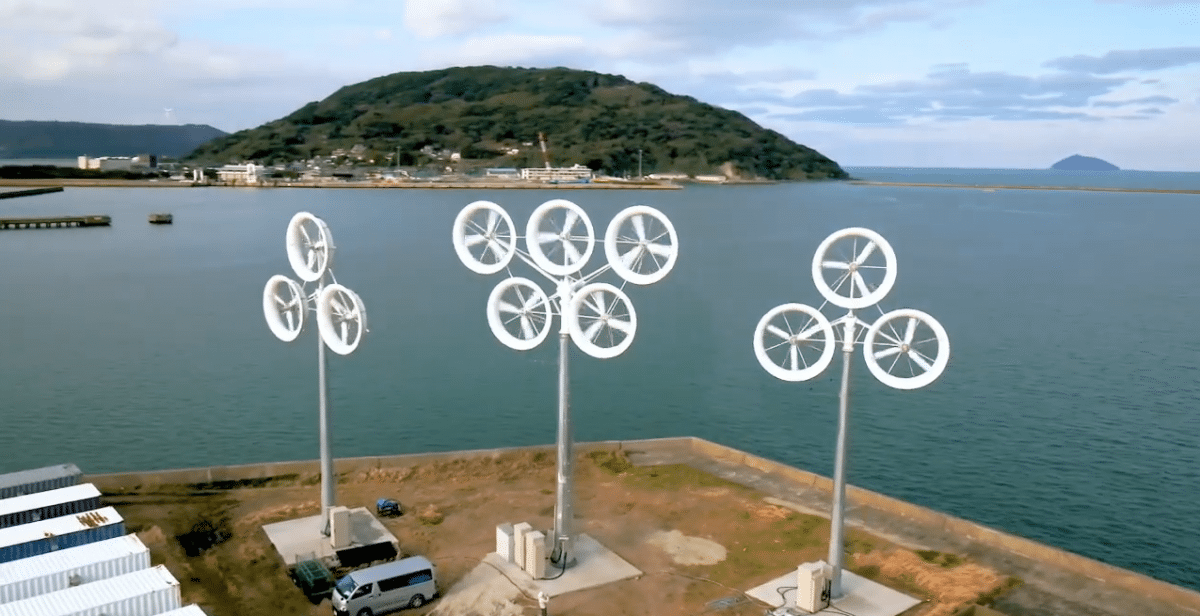Japan is still lagging behind other countries in the development of wind farms. The Kyushu University Offshore Wind Research and Education Center wants to change that with a new type of cluster wind turbines. These wind catchers are characterized by the fact that, unlike conventional systems, no large rotor generates electricity, but many smaller rotors mounted next to and on top of each other.
Advertisement
The new type is intended to change the disadvantages of the previous power plants, which are reaching their economic and physical limits as they grow in size. Wind turbines are growing taller and taller, since doubling the rotor length quadruples the power harvest. The largest plants are therefore now 300 meters high.
Wind power: Small rotors against big problems
But with every meter the costs for the tower and the wings also increase. The yield gains are therefore less and less economically worthwhile. In addition, the rotor tips rotate faster, sometimes at more than 100 meters per second. This not only makes them more vulnerable, even raindrops can damage them. They also make more noise.
Japan has always tried everything possible with electronics – and often the impossible. Every Thursday our author Martin Kölling reports on the latest trends from Japan and neighboring countries.
Clusters of smaller rotors aim to solve these problems while generating more power than traditional models. The Norwegian start-up Wind Catching Systems has been developing this idea since 2017. In 2021, the company presented a wall of 117 turbines more than 300 meters high.
The start-up claims that five of these walls will replace 25 conventional offshore wind turbines. In addition, thanks to smaller rotors, the walls can theoretically fully exploit significantly higher wind speeds. They should also be easier to maintain. Because if one rotor is defective or needs to be repaired, the others can continue to turn.
Advertisement
Challenges in the typhoon region of Japan
The Japanese are now trying to further increase the wind yield with an innovation: a wind lens turbine. While the Norwegian system has the rotors spinning freely, the Japanese model is surrounded by a circular frame designed to concentrate the wind.
For 2024, the university institute and the spin-off Riamwind are planning to build a test facility with two 200 kW turbines, each with a diameter of 25 meters. Ultimately, the researchers have a 20 MW plant with 100 turbines in mind. Before the idea is competitive, however, the developers still have to solve problems.
Resilience to strong winds is a challenge, especially in a typhoon region like Japan. Wind speeds in Asian hurricanes can exceed 250 km/h. The weight and cost of the supporting structure are further hurdles. There are therefore still a few adjustments to be made to the new generation of wind turbines that need to be worked on.
(jl)
To home page
